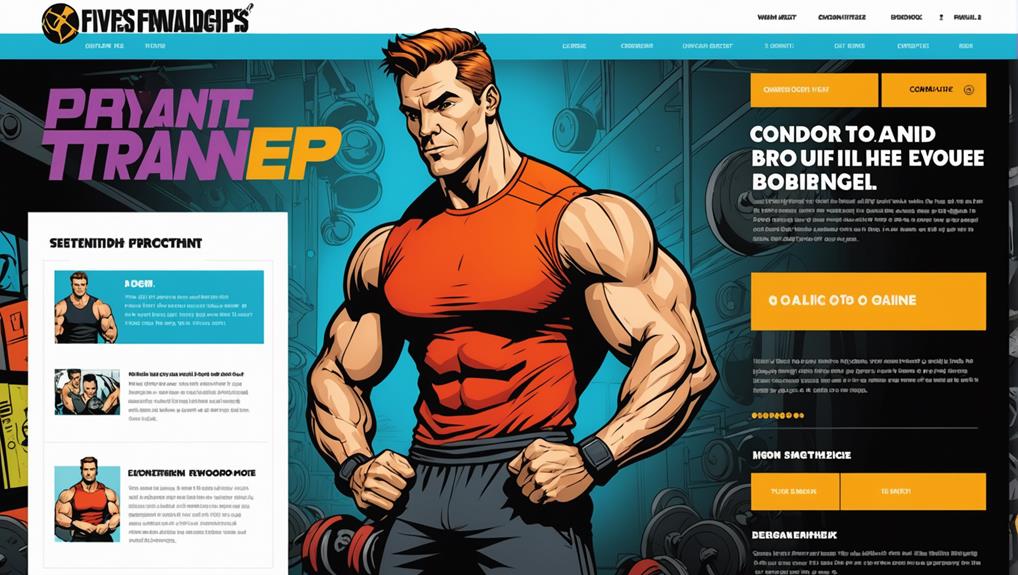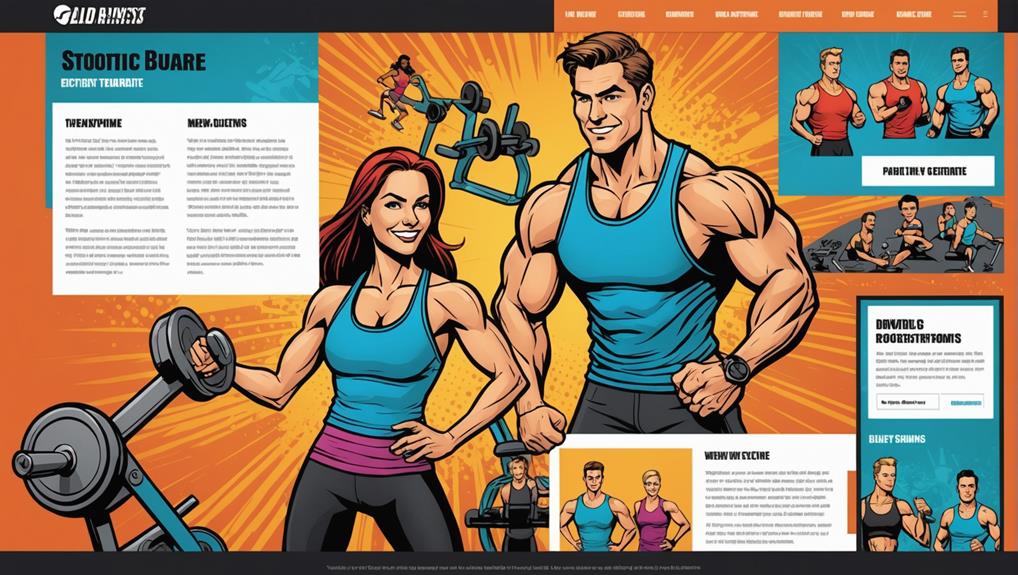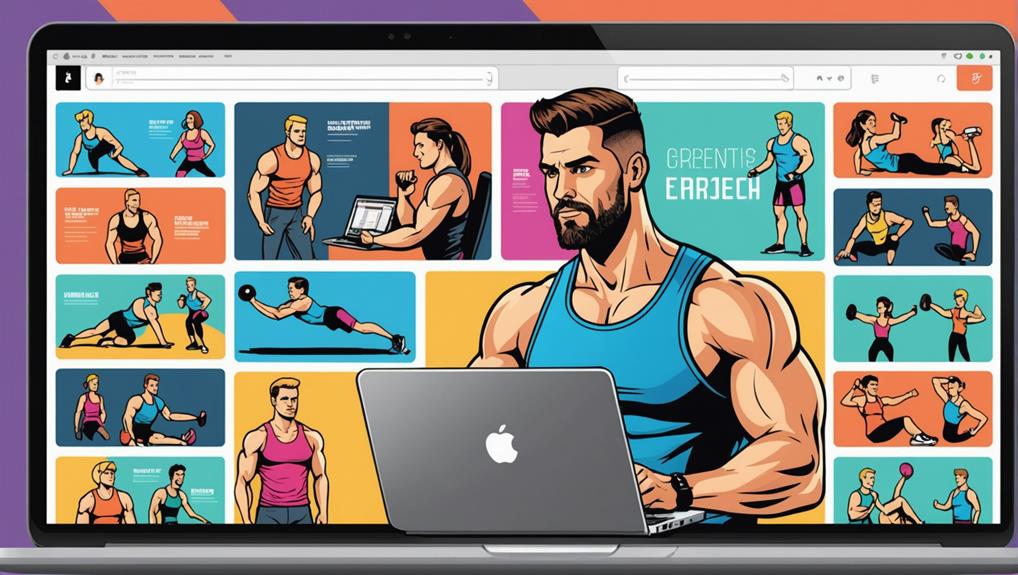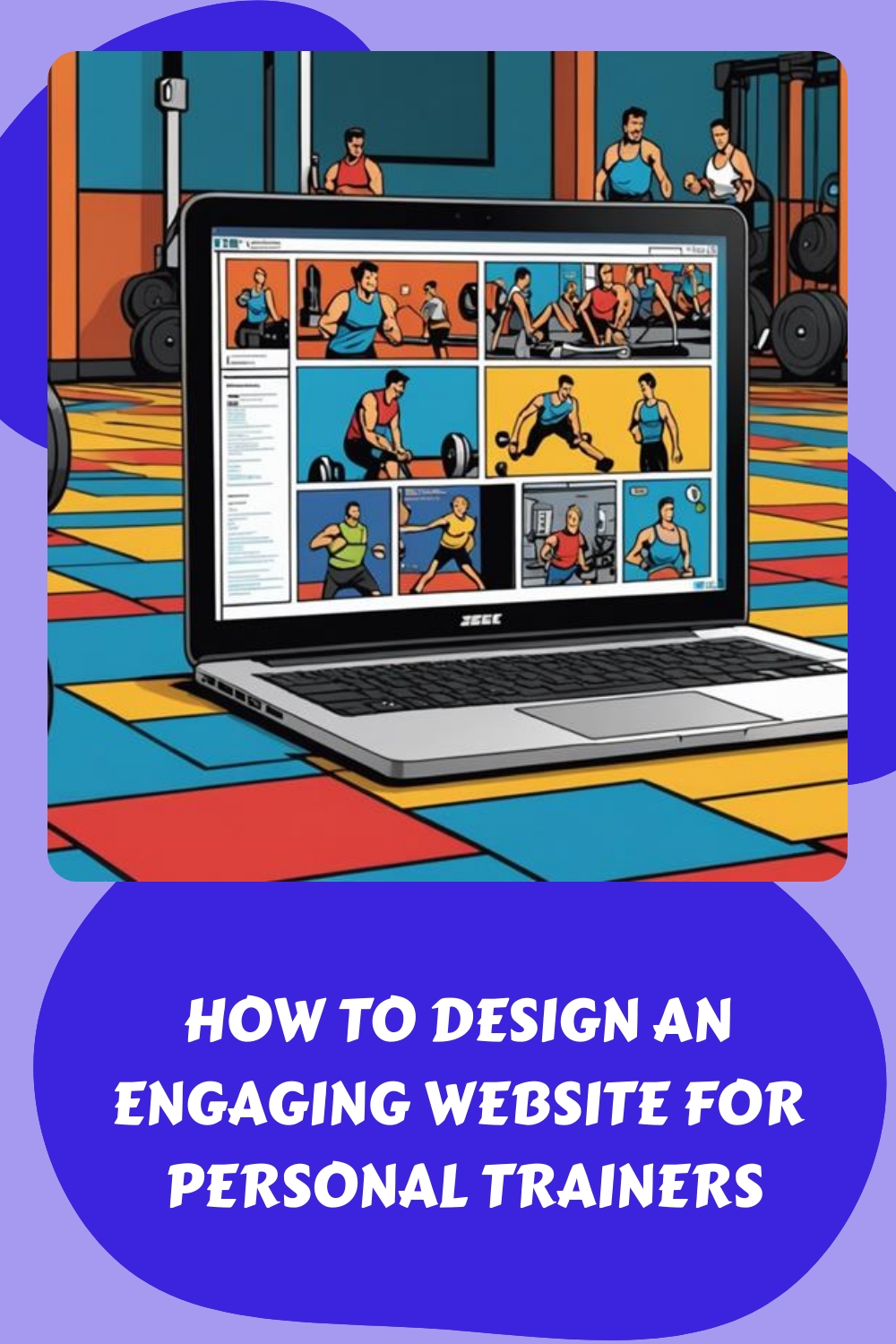
To design an engaging website for personal trainers, start with an attractive layout and easy navigation. Use bright, high-quality images to create a positive vibe. Make sure it's mobile-friendly, as many users browse on their phones. Include essential pages like About Me, Services, and Testimonials to build trust. Highlight your expertise clearly to attract clients. Don't forget to add clear calls-to-action, which encourage visitors to book sessions or explore your services. By following these tips, you'll create a website that stands out and connects with clients. There's so much more you can explore to make your site exceptional!
Key Takeaways
- Create a visually appealing design with high-quality images and cohesive color schemes to draw user attention and enhance user experience.
- Optimize the website for mobile devices to ensure functionality and fast loading times, catering to over 60% of mobile users.
- Incorporate informative content and client testimonials to build trust and establish authority within the fitness industry.
- Utilize clear calls-to-action and a user-friendly booking process to improve conversion rates and reduce appointment abandonment.
- Implement local SEO strategies and regularly publish content to increase visibility and attract local clients effectively.
Key Features of Personal Trainer Websites

When designing a personal trainer website, focusing on key features can make all the difference in attracting and retaining clients. An attractive website design with high-quality images and memorable copy helps create a great first impression. This is essential because visitors often decide quickly whether to stay or leave your site. To elevate your online presence, consider leveraging custom brand building services that reflect your unique identity as a trainer.
User experience plays a significant role too. You should aim for simple navigation, guiding clients effortlessly through your services. Make certain your site is mobile-optimized since over 50% of web traffic comes from mobile devices. A responsive design guarantees that your site looks good on any screen.
Quick load times are important as well. If your website takes more than three seconds to load, you risk losing up to 40% of visitors! To keep clients engaged, include informative content that answers their questions and features client testimonials that build trust. Don't forget a strong call to action, encouraging visitors to sign up for your services.
Types of Personal Trainer Websites
In today's digital landscape, personal trainers have various website types to choose from, each tailored to meet specific client needs and goals. Client-focused websites are perfect for those targeting a local audience. They highlight the benefits of personal training services specific to your region, like promoting community health events. If you're passionate about a certain area of fitness, topic-specific websites let you showcase your expertise in strength training, yoga, or weight loss, attracting clients with specific fitness goals.
Brand-centric websites are another option, representing multiple trainers under one company. This approach broadens your appeal and offers clients various options. For those looking to sell training programs or fitness products, e-commerce enabled websites allow you to diversify your income and reach a wider audience.
Lastly, blog integrated websites combine engaging and informative content with your training services. By sharing valuable insights, you establish authority in the fitness industry and create opportunities for engagement. No matter which type you choose, a strong online presence will help you connect with clients and guide them on their fitness journeys.
Essential Content and Design Strategies

Crafting an engaging personal trainer website requires careful attention to both content and design strategies. Start by including essential pages that provide thorough information for your visitors. Key pages to reflect on are:
- Home
- About Me
- Services
- Testimonials
- Blog
Using high-quality images and a cohesive color scheme boosts your website's visual appeal. Colors can influence emotions, so choose wisely to connect with your audience. You also need clear calls-to-action (CTAs) sprinkled throughout your site. These guide visitors on what to do next, like scheduling a session or signing up for a newsletter.
Don't forget about a user-friendly experience! Optimize your site for mobile devices, ensuring it looks great on all screens. Regular content updates, like blog posts and client success stories, are essential. This not only keeps your audience engaged but also follows SEO practices that improve your search engine visibility.
In short, focus on design and functionality that align with your target audience's needs. By incorporating these strategies, you'll create a website that not only attracts visitors but also transforms them into loyal clients.
SEO Best Practices for Trainers
A well-designed website is just the beginning; optimizing it for search engines is key to attracting more clients. Start with keyword research to find high-volume, low-competition terms. Make certain to include these keywords in your titles, headers, and website content. This step is vital for effective search engine optimization.
Next, don't forget about meta tags! Craft compelling title tags and meta descriptions that include your chosen keywords. This can really boost your click-through rates from search engine results. Regularly publish high-quality content, like blog posts or articles, to engage visitors and position yourself as an authority in the fitness industry.
Building backlinks is another great strategy. Partner with reputable fitness sites or contribute guest posts; this can enhance your domain authority and improve your search rankings. Also, implement local SEO strategies by setting up a Google Business Profile. Confirm your Name, Address, and Phone Number (NAP) are consistent across online directories to improve visibility in local searches.
Community Engagement Techniques

Building a vibrant community around your personal training services can greatly enhance client loyalty and engagement. When clients feel connected, they're more likely to stick with their fitness journey. Here are some effective community engagement techniques to reflect upon:
- Interactive Elements: Implement forums or comment sections for discussions and feedback, fostering community around fitness goals.
- Testimonials Page: Create a dedicated page featuring before-and-after photos and client success stories, reinforcing trust and motivation.
- Social Media Integration: Encourage clients to share their experiences across platforms, allowing them to connect and support each other.
- Q&A Sessions: Host regular live Q&A sessions or webinars to answer client inquiries and provide expert insights, enhancing personal connections.
- Client Spotlight: Feature individual success stories on your website to promote relatability and inspire others in the community.
Effective Conversion Strategies
Creating a community around your personal training services lays a solid foundation for effective conversion strategies. To turn visitors into clients, focus on clear and compelling call-to-action (CTA) buttons. Placing these strategically can boost conversion rates by up to 23%. Don't forget to showcase testimonials and success stories. When potential clients see real results, trust grows, enhancing the chances of conversion by 50%.
A seamless booking process is vital. Make sure your scheduling tools are user-friendly; a smooth experience can reduce appointment abandonment rates by 68%. Plus, optimizing your website for mobile devices is critical. Did you know that 61% of users might not return to a mobile site that's hard to use? That directly impacts your conversion rates.
Lastly, keep your content fresh with regular updates. Websites that post new content weekly see a 50% increase in conversion rates over time. By combining these strategies, you can create a website that not only attracts visitors but also converts them into loyal clients. Embrace these tools, and watch your personal training business thrive!
Choosing the Right Website Builder

Choosing the right website builder can feel overwhelming, but it's an exciting step towards creating your personal trainer brand online. You might want to compare platforms like WordPress for its customization options or go for user-friendly choices like Squarespace and Wix that don't require coding skills. Remember, the right builder will not only make your site look great but also enhance your clients' experience on any device!
Website Builder Comparisons
Deciding on the right website builder can greatly impact your online presence as a personal trainer. You want a site that showcases your fitness services and engages users effectively. Here are a few options to contemplate:
- Squarespace: Great for minimalistic website design, starting at $16/month. However, it lacks phone support.
- Wix: Offers a user-friendly drag-and-drop interface with customizable templates. Their pricing ranges from $16 to $45/month, but beware of ads in the free plan.
- WordPress: This platform powers 40% of websites and is perfect for tech-savvy users. However, remember that you'll need to pay for domain and hosting separately.
- Portfoliobox: Features an intuitive builder and integrated SEO tools, ideal for visually driven personal training websites.
- Considerations: Think about ease of use, customization options, support availability, and e-commerce capabilities.
Choosing the right website builder means prioritizing user engagement, effective contact information, and online training features. With the right tools, you'll create a compelling personal training website that attracts clients and showcases your passion for fitness!
User Experience Considerations
When it comes to building an engaging website as a personal trainer, user experience plays a pivotal role in attracting and retaining clients. Choosing the right website builder can make this process smoother. For instance, platforms like Wix and Squarespace offer user-friendly, intuitive designs that let you create a visually appealing site without needing coding skills.
Don't forget about mobile optimization! With over 60% of users accessing the internet on their phones, your website must look great and work well on all devices. This guarantees clients can easily navigate your site anytime, anywhere.
Consider e-commerce capabilities too. If you want to sell services or workout plans directly online, a builder that supports this feature can streamline transactions for your clients.
Frequently Asked Questions
Should Personal Trainers Have a Website?
Yes, you should definitely have a website. It boosts your brand identity, showcases your services, and builds client trust. Plus, it enhances client engagement and lead generation, giving you a competitive advantage in attracting clients.
How to Create a Successful Online Personal Training Business?
To create a successful online personal training business, focus on niche specialization, effective digital branding, and pricing strategies. Utilize training platforms, content creation, and social media to enhance client retention and offer subscription services for consistent income.
How Do I Market Myself as a Personal Trainer?
Imagine your brand identity shining like a beacon in the fitness community. Utilize social media, email campaigns, and video marketing to showcase client testimonials, connect with your target audience, and attend networking events for service diversification.
How Do Online Personal Trainers Find Clients?
To find clients, you should use client acquisition strategies like social media promotion, leverage testimonials, build referral partnerships, and utilize email marketing. Optimize your online presence and create engaging content while applying niche targeting tips and effective networking techniques.
Final Thoughts
Designing an engaging website for personal trainers can feel like climbing a mountain, but with the right steps, you'll reach the peak! By focusing on key features, essential content, and effective strategies, you can create a site that truly shines. Remember, your website is your digital home, where clients can connect and grow. So, take a deep breath, embrace the journey, and keep improving. You've got this, and your future clients will thank you for it!
- How to Plan a Content Calendar That Works - 29/10/2025
- SEO Content vs. Social Media Content: What’s the Difference? - 23/10/2025
- The Best Types of Content for Service Businesses - 16/10/2025




